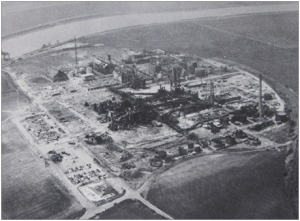Today the British Safety Council (BSC) has released its digital archive, covering the 60 years of its life and really showing how ideas about health and safety in Britain have changed since 1957.
Mike has been advising the BSC on its archive and making best use of its past – and in the project, we benefitted from this, as we were able to visit the archive in person and get early access to its wealth of insight. Contained within the archive are a good run of the BSC’s posters from the 1970s to the present, a complete run of the BSC’s newspaper and magazine publications from 1957, minutes of the BSC’s meetings, reports produced by the BSC and press coverage. It’s a fantastic resource for health and safety practitioners, for historians of health and safety – and indeed for anyone interested in Britain’s social and cultural history.
In the archive we can see a gradual increase in concern about workplace health, for example, or the prominence of the EU (Brexit only adds a piquancy to the ‘the load must not be too heavy for Europeans to lift’ poster).
Manual work, including using machinery, features strongly – but increasingly over the years office work becomes more visible.
It’s also interesting to see how ideas about gender have played out – reflecting their times, much of the older material plays to men, featuring women only as sex objects. Later material is more balanced, particularly as more and more women entered the workplace. And of course we can get at ideas about masculinity, as well – a recurring motif is the idea of not being too tough for first aid, for example.
Although the majority of the archive material focuses on occupational issues, from the outset this was understood in very broad terms, something reflected in the archive which highlights the BSC’s involvement in pretty much every aspect of accident prevention imaginable – including things like consumer safety, healthy beaches, DIY, women’s safety, AIDS, fireworks, children’s playgrounds and more.
Needless to say, there’s plenty more in the archive than this quick outline – the best way to get an idea about it is to visit it yourself: https://services.storetec.net/?u=public@bsc.org&p=FreelyDeal42
(All images: courtesy British Safety Council)









